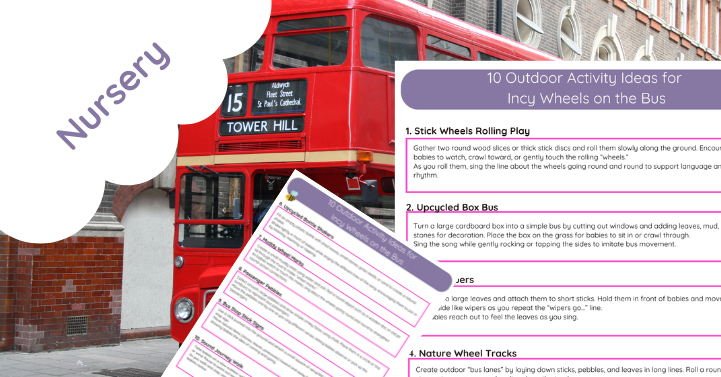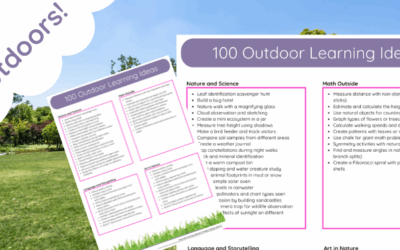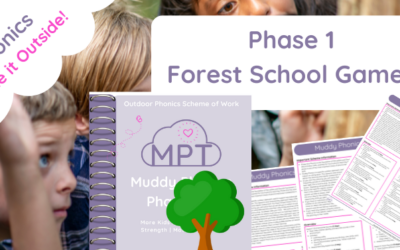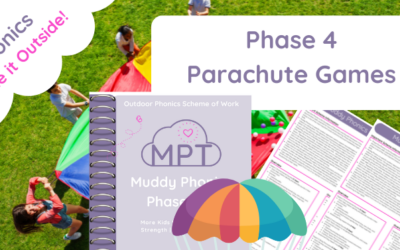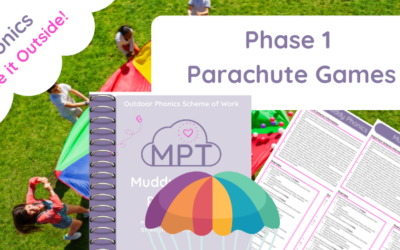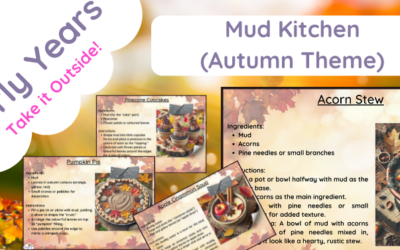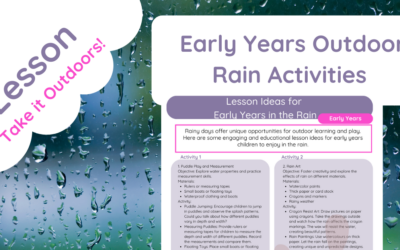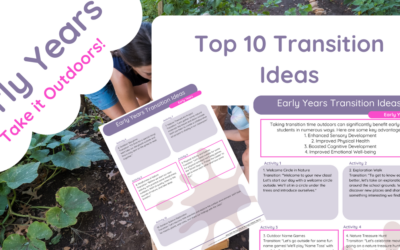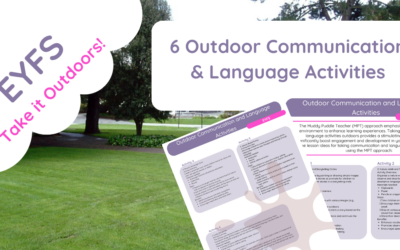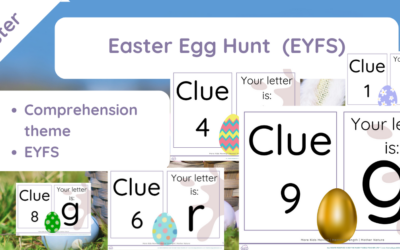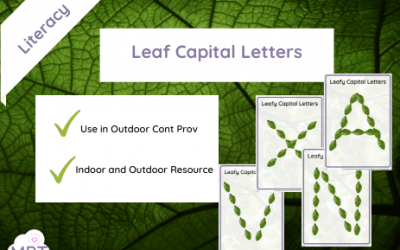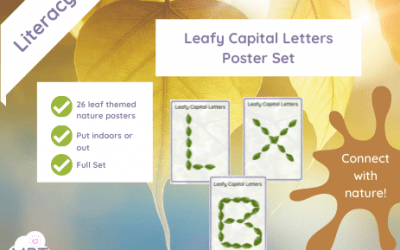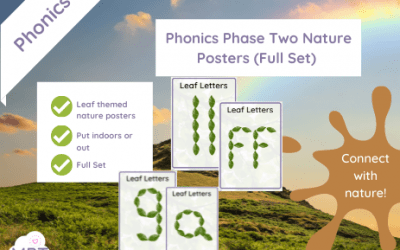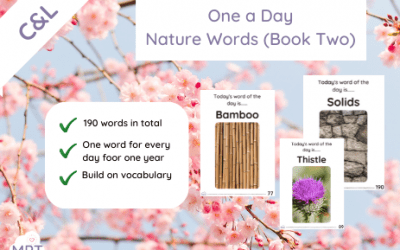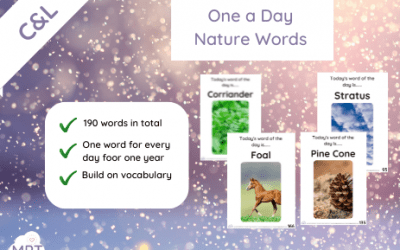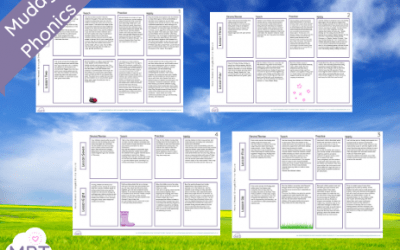100 Outdoor Learning Ideas: Spark Curiosity, Adventure, and Discovery! Step outside and transform any outdoor space...
Forest School Phonics Games (Phase One)
Feb 10, 2025
Engage young learners in phonics through nature-inspired, multi-sensory Forest School games. Our Phase 1 Phonics...
Phase Four Phonics Games (Parachutes)
Feb 10, 2025
Phase 4 Phonics Parachute Games – Active Learning for Confident Readers Take Phase 4 phonics outdoors with Parachute...
Parachute Games Phase One
Feb 9, 2025
Parachute Games for Phase 1 Phonics – Engaging, Active Learning Outdoors Transform early phonics learning into an...
Mud Kitchen Posters – Christmas Theme
Nov 12, 2024
Christmas-themed Mud Kitchen Posters Bring festive cheer to your little one's outdoor play area with our delightful...
Mud Kitchen Recipe (Autumn Theme)
Nov 12, 2024
Product Description: Mud Kitchen Recipe Kit – Autumn Theme Ignite your child's imagination and connection with nature...
Early Years Rain Activities
Jul 2, 2024
Why Early Years Should Engage in Rain Activities Engaging in rainy activities offers numerous developmental benefits...
Early Years Transition Day Ideas
Jun 30, 2024
Early Years Transition Day Ideas Taking transition time outdoors can significantly benefit early-year students in...
Communication and Language in EYFS
Jun 28, 2024
Enhancing Communication and Language in EYFS through Outdoor Activities Effective communication and language skills...
Easter Egg Hunt EYFS
Apr 1, 2024
What does this resource include? Easter egg hunt pack 9 x clue sheets to scatter around your outdoor spaces 1 x Answer...
Capital Letters in Rocks
Apr 26, 2022
Capital Letters in Rocks this a great nature-based poster set to display in the continuous provision or you could use...
Capital Letters in Leaves
Apr 26, 2022
Capital Letters in Leaves is a super popular resource of ours that could be used in outdoor continuous provision or...
Leafy Capital Letters Posters
Mar 16, 2022
Use Leafy Capital Letters Posters to help enhance your outdoor provision with these nature-based resources.
Phonics Phase Two Nature Posters (Full Set)
Mar 16, 2022
Use this wonderful pack of nature posters to display phase two phonics sounds in your area! Top tip if you're using...
One a Day Nature Words -Book Two (Vocabulary Builder Early Years)
Nov 29, 2021
One a Day Nature Words - BOOK ONE -(Vocabulary Builder Early Years) This resource comes in two documents. Download...
One a Day Nature Words -Book One – (Vocabulary Builder Early Years)
Nov 29, 2021
One a Day Nature Words - BOOK ONE -(Vocabulary Builder Early Years) This resource comes in two documents. Download...
S1E2: Let’s Play Outside with Greg Bottrill
Apr 29, 2021
On today's must-have outdoor learning podcast we have the wonderfully inspiring Greg Bottrill who has come on the show...
Muddy Phonics Phase One Planning Unit
Apr 22, 2021
Muddy Phonics Phase One Planning (Scheme of work) will help you make that muddy step to take more of your phonics...
New In
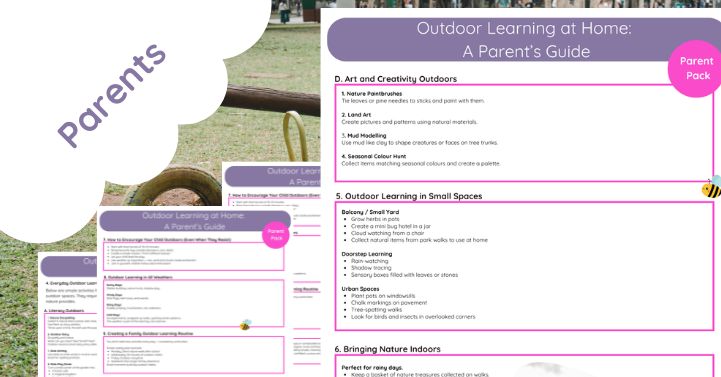
Outdoor Learning at Home: A Parent’s Guide
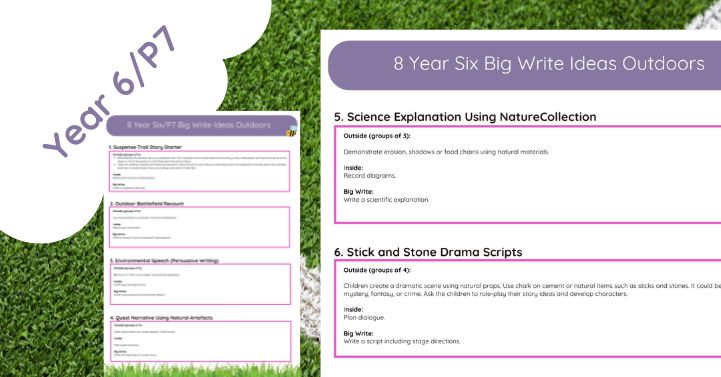
Year Six Big Write Ideas Outdoors
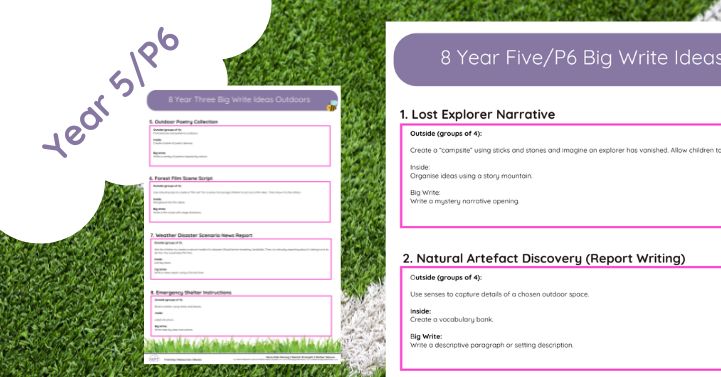
Year Five Big Write Ideas Outdoors
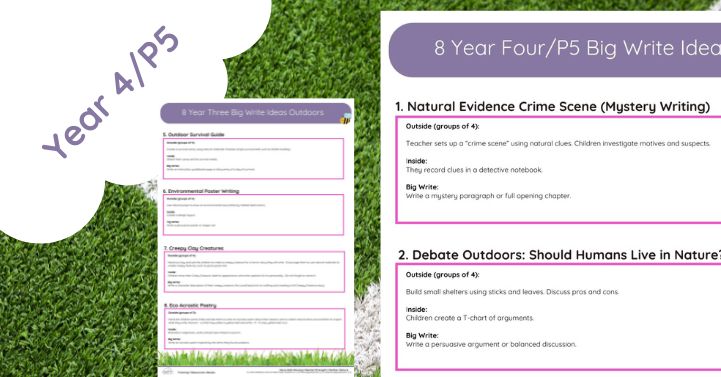
8 Year Four Big Write Ideas Outdoors
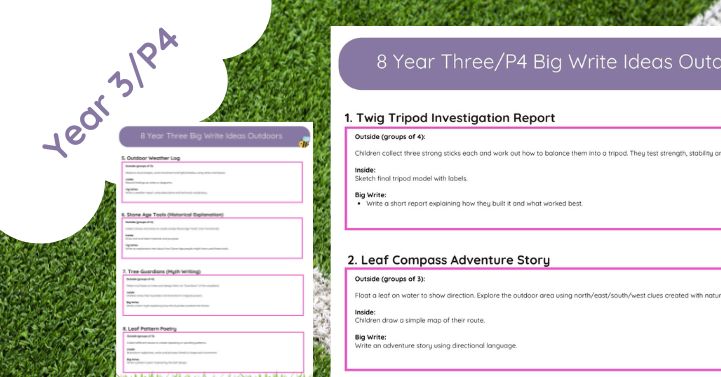
8 Year Three Big Write Ideas Outdoors
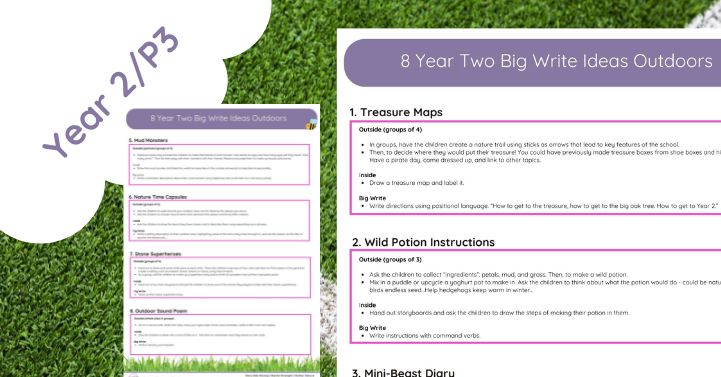
8 Year Two Big Write Ideas Outdoors
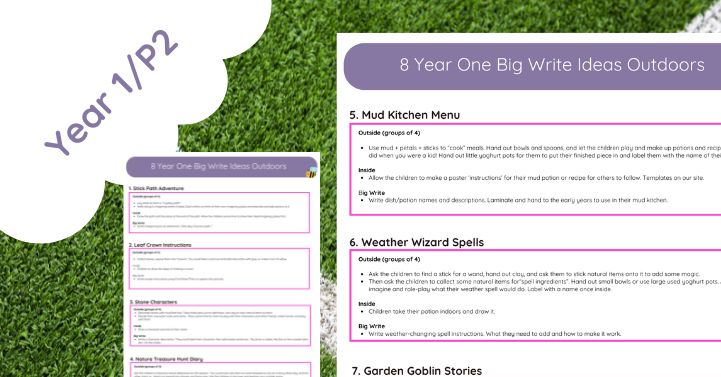
8 Year One Big Write Ideas Outdoors
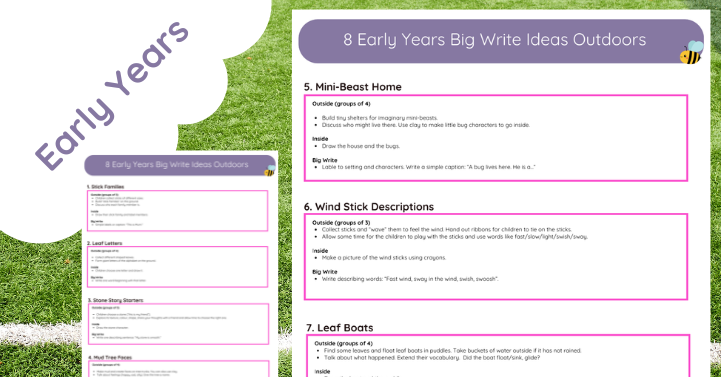
8 Early Years Big Write Ideas Outdoors
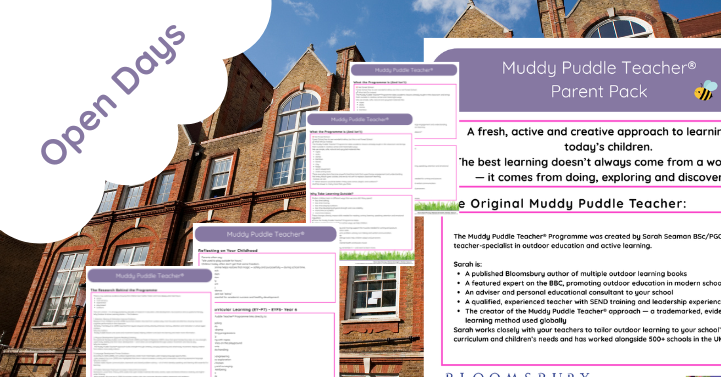
Open Day Outdoor Learning Parent Packs ( Muddy Trained Schools)
